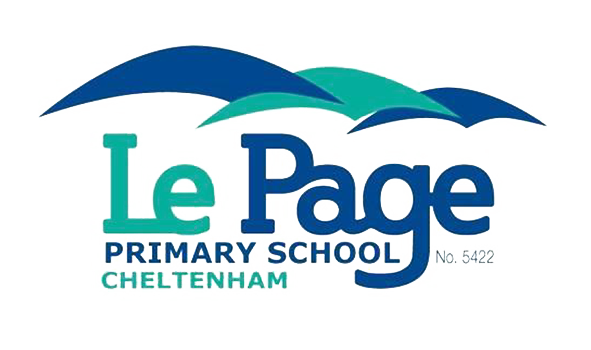Teaching & Learning
Victorian Curriculum
F-10 is the curriculum for Victorian schools. It incorporates the Australian Curriculum and reflects Victorian standards and priorities. The curriculum, resources and supporting information is available here: Victorian Curriculum F-10 website
Program Planning
Teams of teachers meet weekly to collaboratively plan learning sequences for our students. To do this they use student assessment data to plan for learning experiences that meet the needs of the students in their next learning progression. Teacher’s plan using the High Impact Teaching Strategies
Le Page’s instructional model is designed to allow for consistent and collaborative instruction across all year levels. Our instructional model is primarily based on the Gradual Release of Responsibility. The Gradual Release Model is a best practice instructional model where teachers strategically transfer the responsibility in the learning process from the teacher to the students (Fisher & Frey, 2013).
Gradual Release of Responsibility Model:
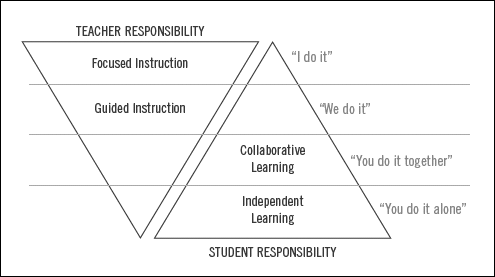
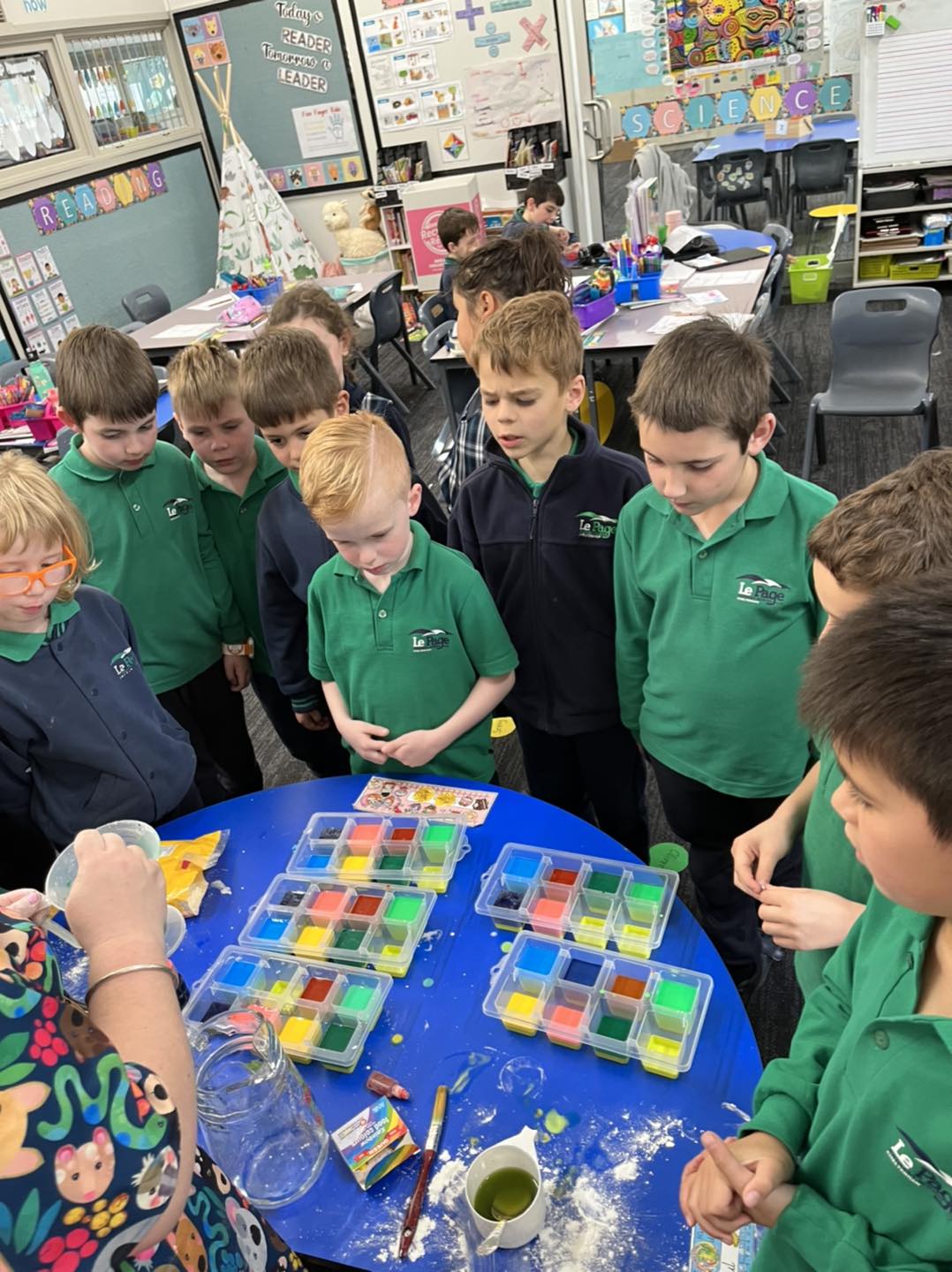
Literacy
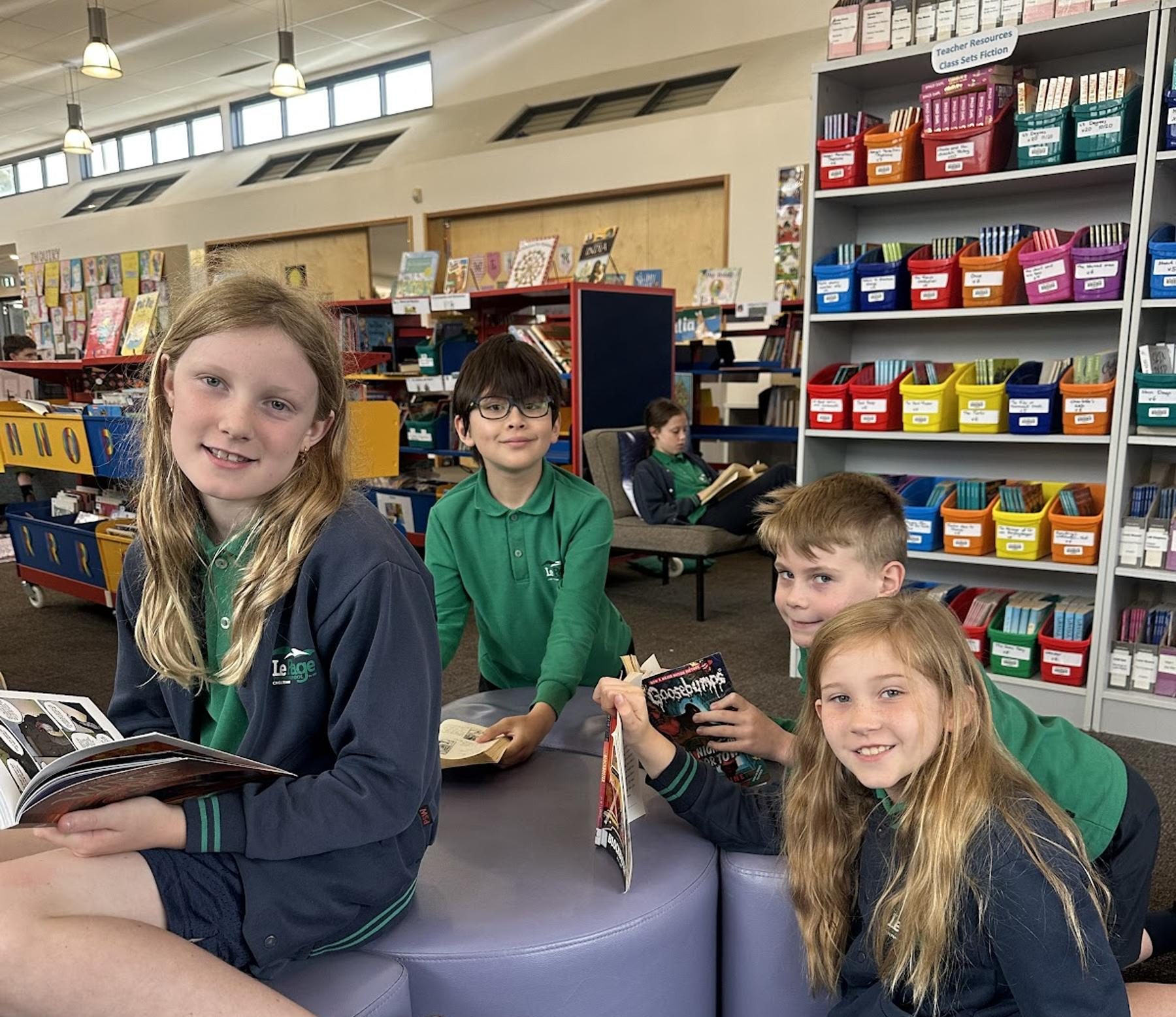
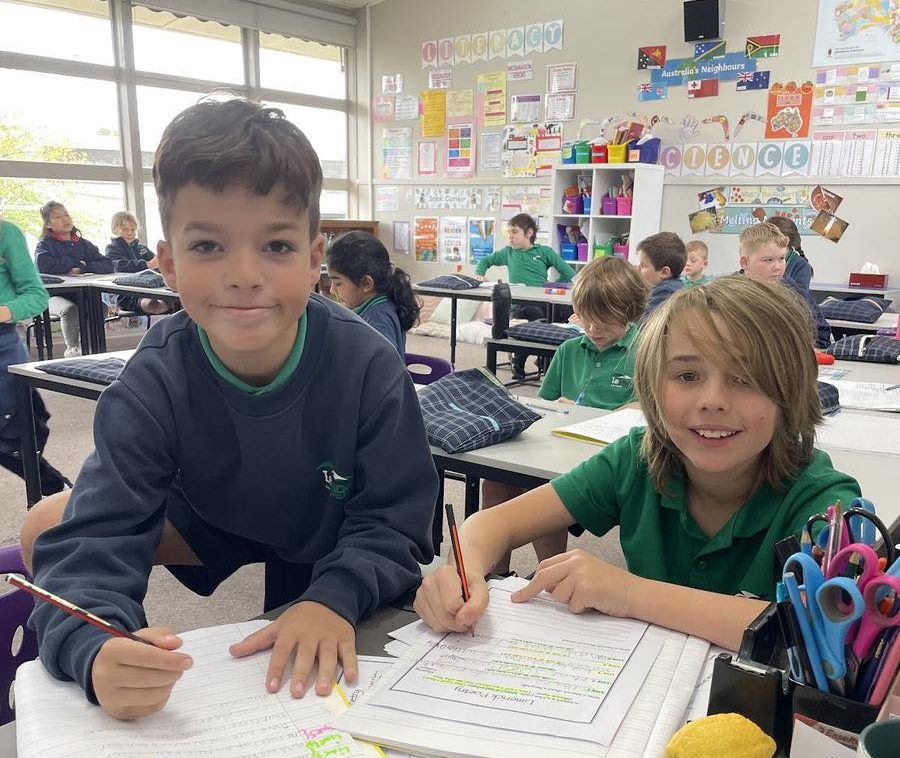
Le Page Primary School is committed to providing students with the highest quality of education through an evidence-based approach to literacy instruction. We base our structured literacy teaching on the Science of Reading approach. The science of reading looks at the essential cognitive processes for competent reading and describes how reading develops in both typical and atypical readers.
In our junior years (Foundation to Year 2) we introduce structured synthetic phonics through a combination of the Little Learners Love Literacy Program® and PhOrMeS®. In addition, students in the junior school take part in phonological awareness activities drawn from Heggerty®. Our middle (Years 3 and 4) and senior (Years 5 and 6) school students continue their spelling and word knowledge through a study of morphology and etymology. At Le Page we draw from Morpheme Magic® and PhOrMeS® to explicitly teach students about prefixes, suffixes, roots and word origins.
To teach sentence construction and grammar we utilise the Write To Learn® program from Foundation to Year 6. Write To Learn is inspired by methodologies recommended by The Writing Revolution® within an Australian curriculum context and combines this with teaching approaches from Explicit Instruction.
At Le Page we have a strong focus on building fluent readers. We believe that fluency has a strong bi-directional relationship with reading comprehension. We incorporate focussed instruction in the form of repeated reading in our fluency pairs routine which we offer school wide from Foundation to Year 6.
Explicit handwriting practise forms part of our weekly routine from Foundation to Year 2. For our middle and senior school students the emphasis switches to the development of punctuation, paragraphing, editing and multi-modal text development.
Vocabulary, paragraph construction, content knowledge, text composition and comprehension strategies are taught through a rich text approach to reading and writing, drawing from The Simple View of Reading. Across the year students are exposed a range of texts including narrative, persuasive and informational.
Literacy skills are tracked regularly through our DIBELS, Little Learners Love Literacy and rich comprehension assessments, together with standardised assessments including NAPLAN and PAT Reading. Students identified as ‘at risk’ across any of the areas of literacy may be referred to the Tutor Learning Initiative for small group instruction.
Ultimately, at Le Page we aim to develop passionate life-long readers and writers, confident in their application of reading and writing skills across a range of disciplines.
Numeracy
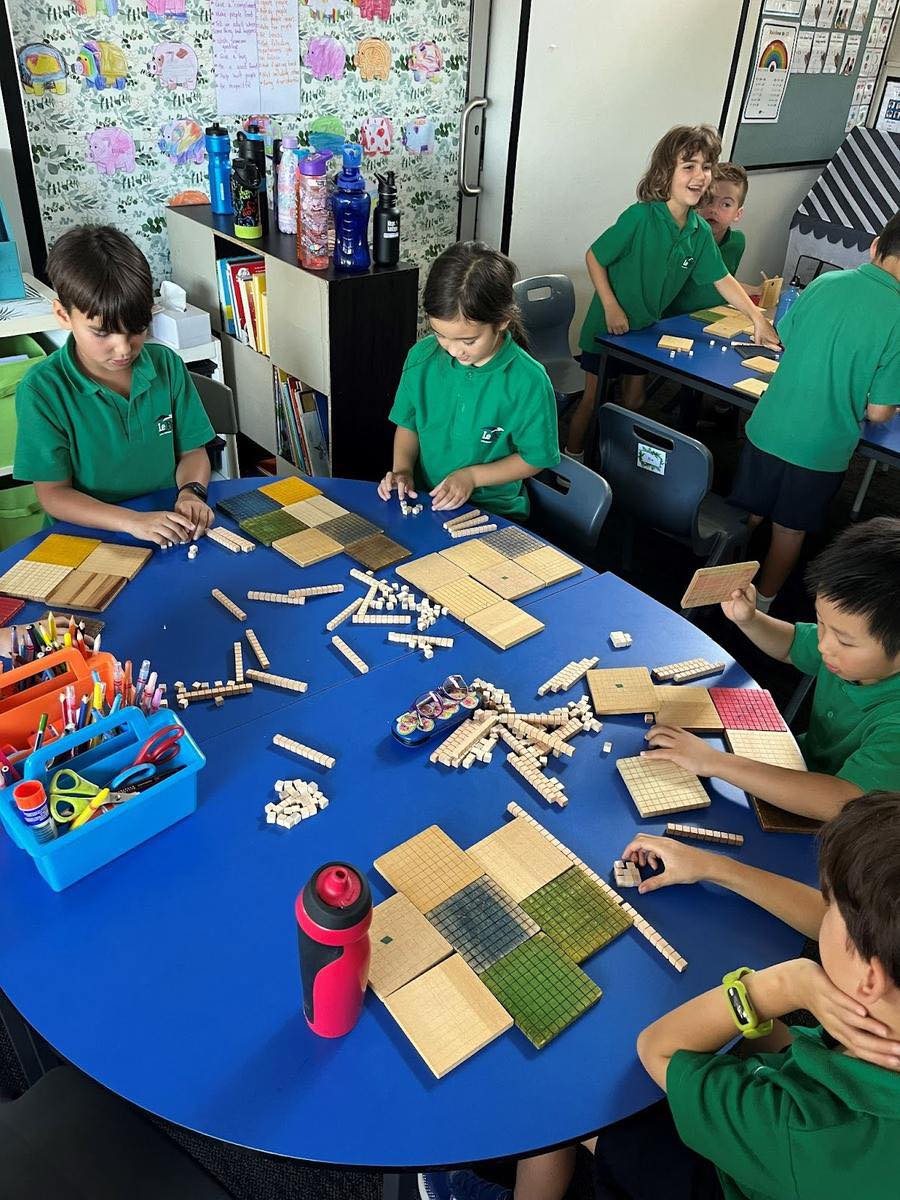
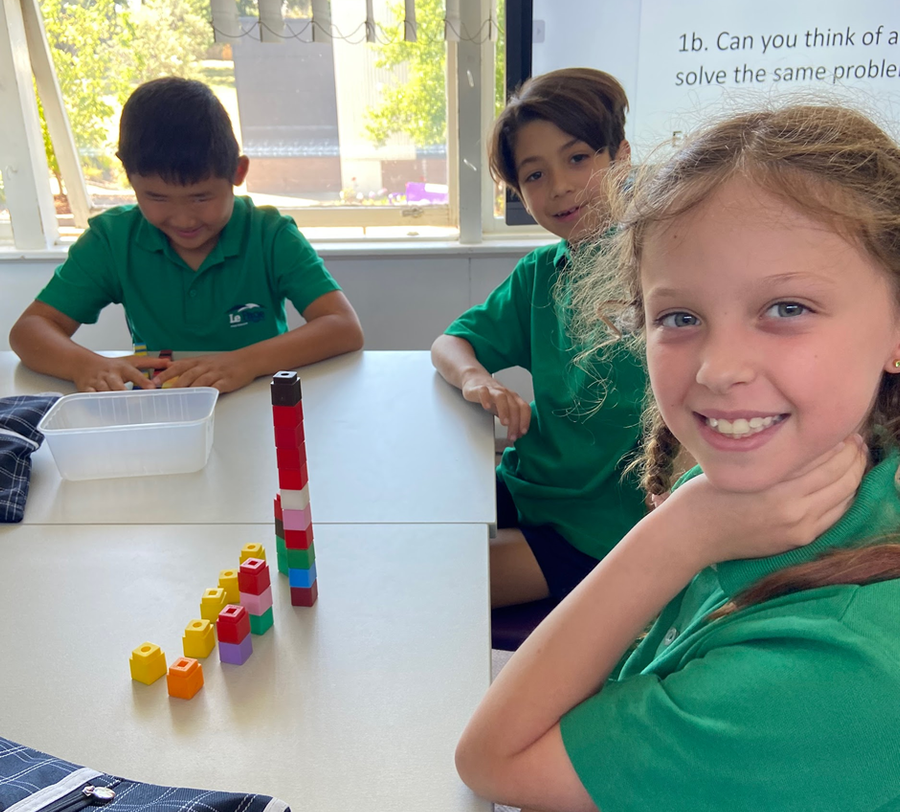
Students at Le Page Primary complete six mathematics lessons per week, this being a Department of Education’s recommendation of 300 minutes of maths learning per week.
Le Page Primary created an instructional model, providing students with a consistent and evidenced-based approach to learning across all classes and at all year levels. The instructional model comprises:
1. Daily Maths Review
2. Introduction – Learning Intention / Success Criteria
3. Key Vocabulary
4. Explicit Teaching
5. Independent Practice
6. Reflection
7. Exit ticket (formative assessment)
Teachers lead the students through the lesson with explicit teaching of relevant mathematical concepts as detailed by the Victorian Curriculum 2.0, which includes the following six strands across Foundation to Year 6:
- Number
- Algebra
- Measurement
- Space
- Statistics
- Probability
Using the Victorian Curriculum we have mapped out the school’s annual Numeracy Scope and Sequence so that all year levels learn similar concepts at the same time of the year.
After explicitly teaching concepts, students have opportunity to put their learning into practice to consolidate their understandings. The emphasis is to use hands on manipulatives, maths games and activities, to foster a sense of fun and passionate learning, which promotes a deeper and more thorough understanding of the concepts being taught.
Lessons conclude with reflective practice, when students think about their learning throughout the lesson, they share and clarify misconceptions, and discuss how the learning intentions were realised.
Following a vigorous assessment schedule comprising measurement tools and teacher judgements, targeted lessons and activities are strategically planned to develop students’ understandings and confidence in mathematics. Each semester the students are rated against the Department of Education’s maths competency standards.
Victorian Curriculum Mathematics Version 2.0
Mathematics Curriculum Companion – to assist navigating through Year levels of the curriculum
The Numeracy Portal brings together a range of resources, activities and programs.
Science & Humanities
Science
Science lessons and units of study are planned by professional learning teams to meet the Science outcomes outlined in Victorian Curriculum. Each lesson is 50 minutes in duration and students will complete one session per week. A scope and sequence approach is practiced.
Humanities
Humanities lessons are planned in teams to meet the outcomes outlined in the Victorian Curriculum. Each lesson is 50 minutes in duration and students will complete one session per week.
Each term we rotate through the following Humanities domains:
- History
- Geography
- Civics & Citizenship (Grade 3 – 6 only)
- Business & Economics (Grade 5 – 6 only)
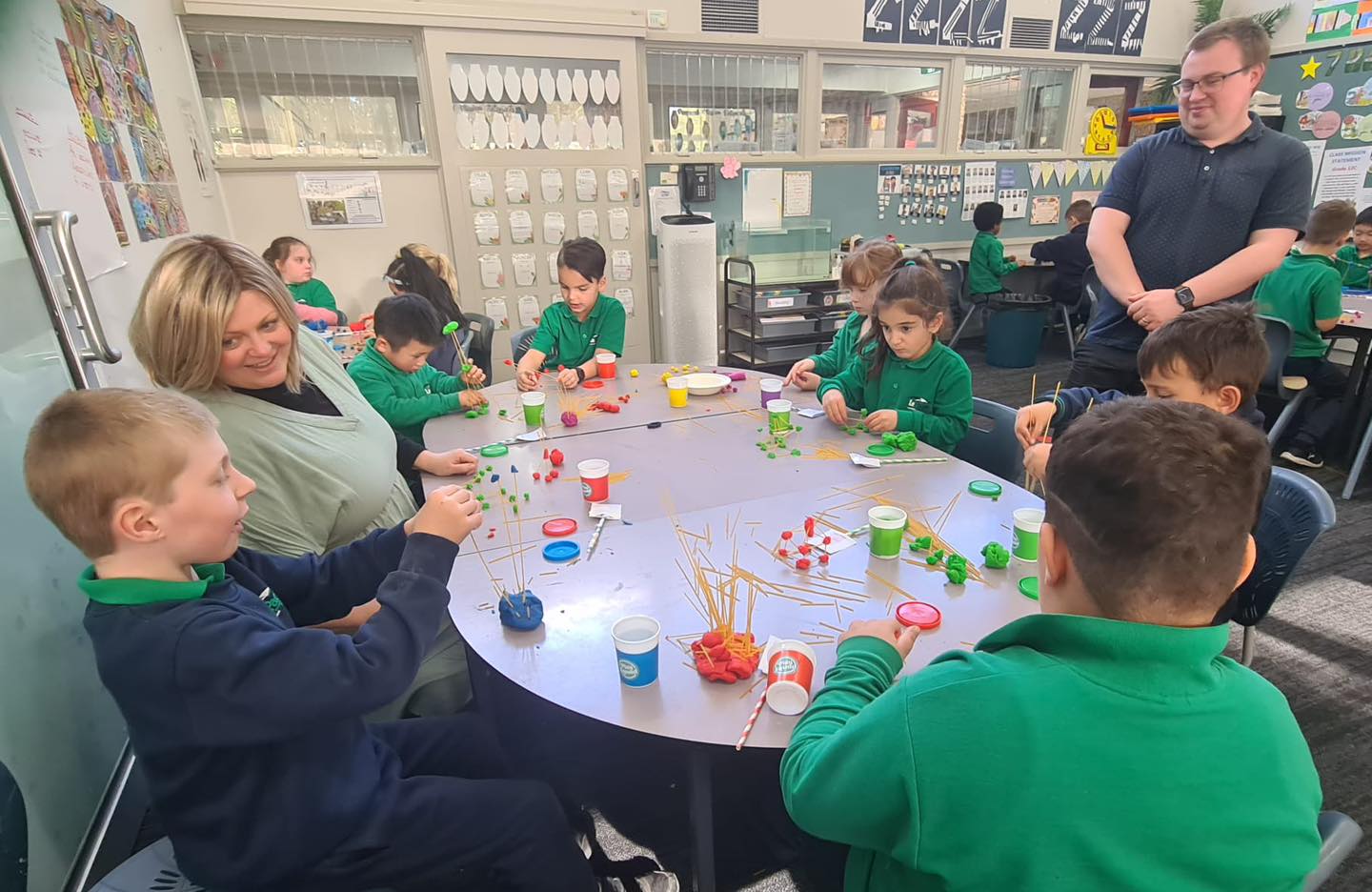
Information & Communication Technology
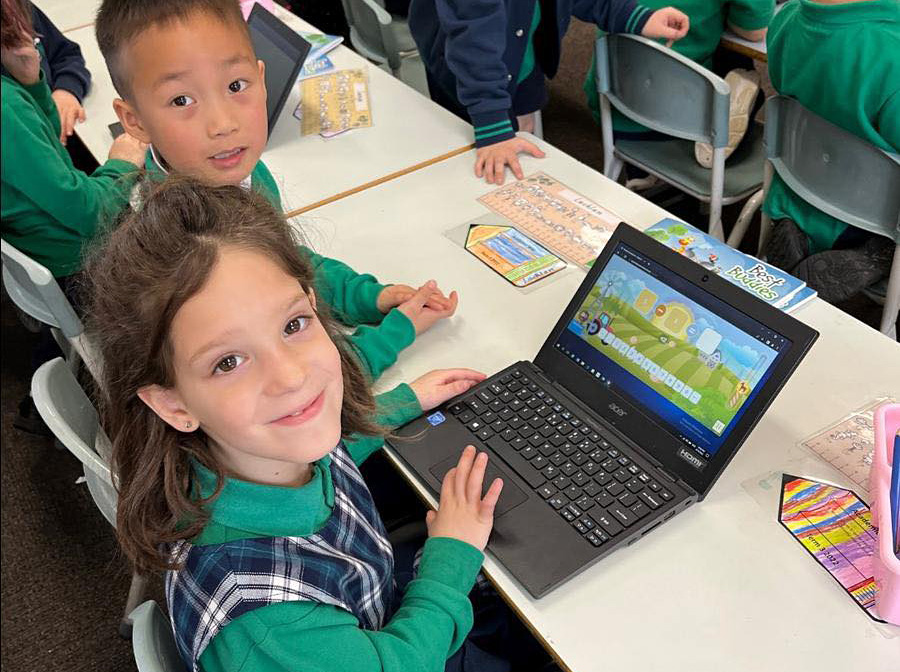
We have suites of laptops and desktops that are used for explicit technology learning and to compliment the teaching and learning in the classroom.
Technology is integrated during all lessons and explicit skills are taught as outlined by the Victorian Curriculum.
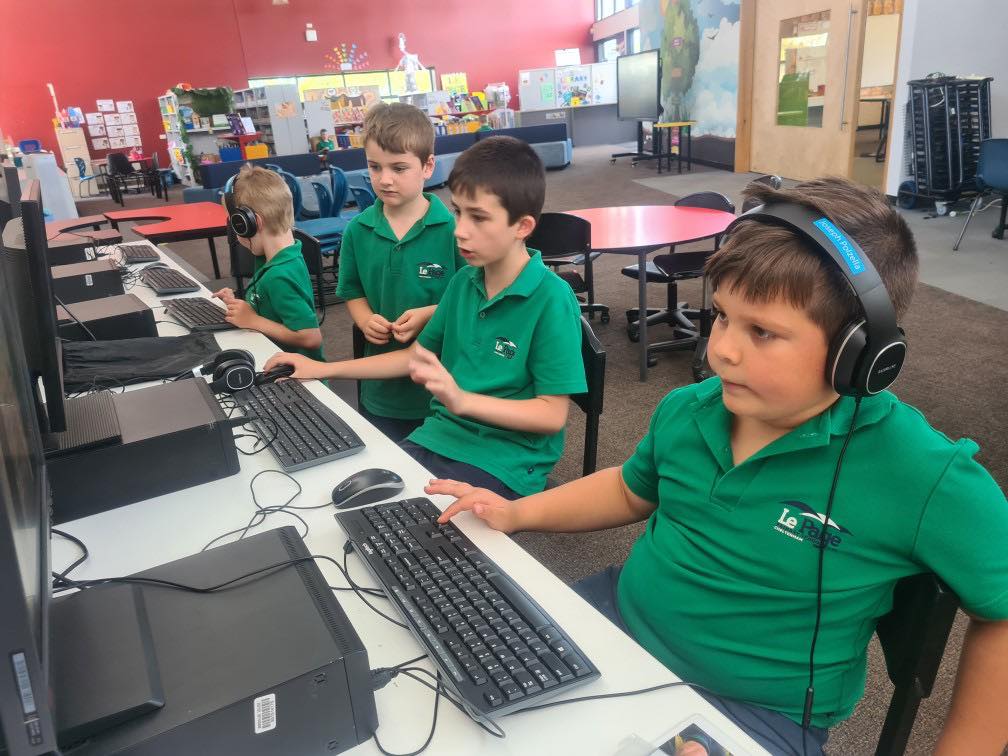
Visual Arts
In Visual Arts lessons, students are introduced to and learn how to create art through asking questions, planning, using their imagination, exploring, experimenting, learning new skills, different techniques, responding, presenting, and sharing their artwork creations. Students are encouraged to have fun, experiment, explore with hands on materials, unique styles that represent the individual student.
Our students develop skills through the seven areas of art: Drawing, Painting, Collage, Printmaking, Modelling, Construction, Threading and Textiles.
Through these skills students learn about visual art elements, such as colour, form, line, shape, space, and texture, which then explores the art principles of scale, proportion, unity, variety, rhythm, balance, volume and perspective.
Visual Arts, Foundation – Year 6:
Term 1
Drawing
Painting
Term 2
Collage
Printmaking
Term 3
Modelling
Construction
Term 4
Threading
Textiles
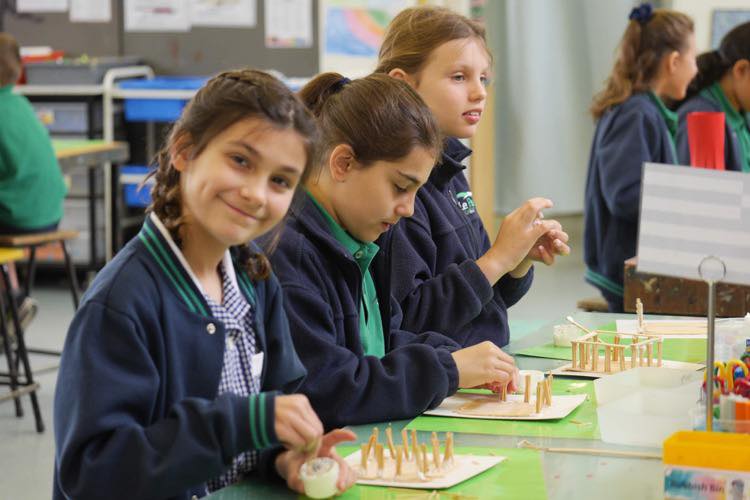
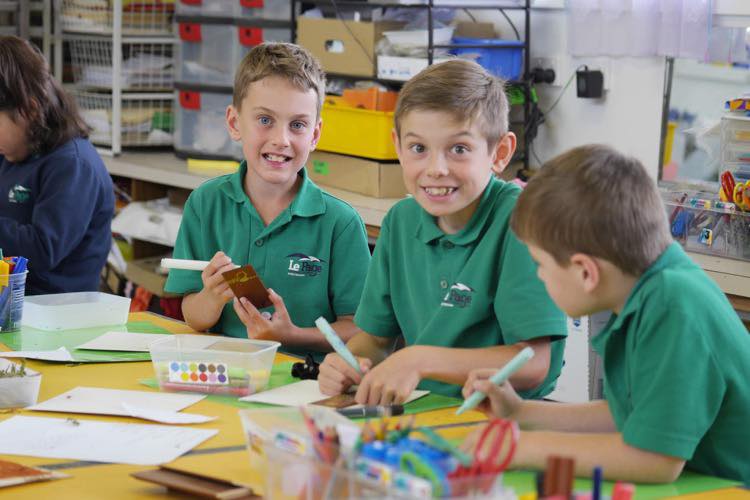
Music & Performing Arts

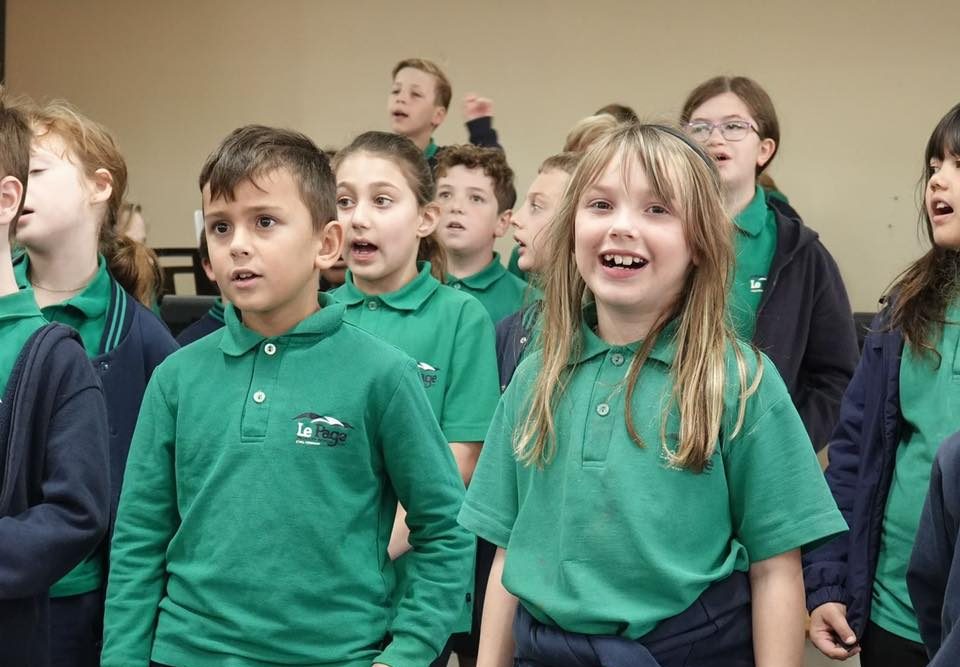
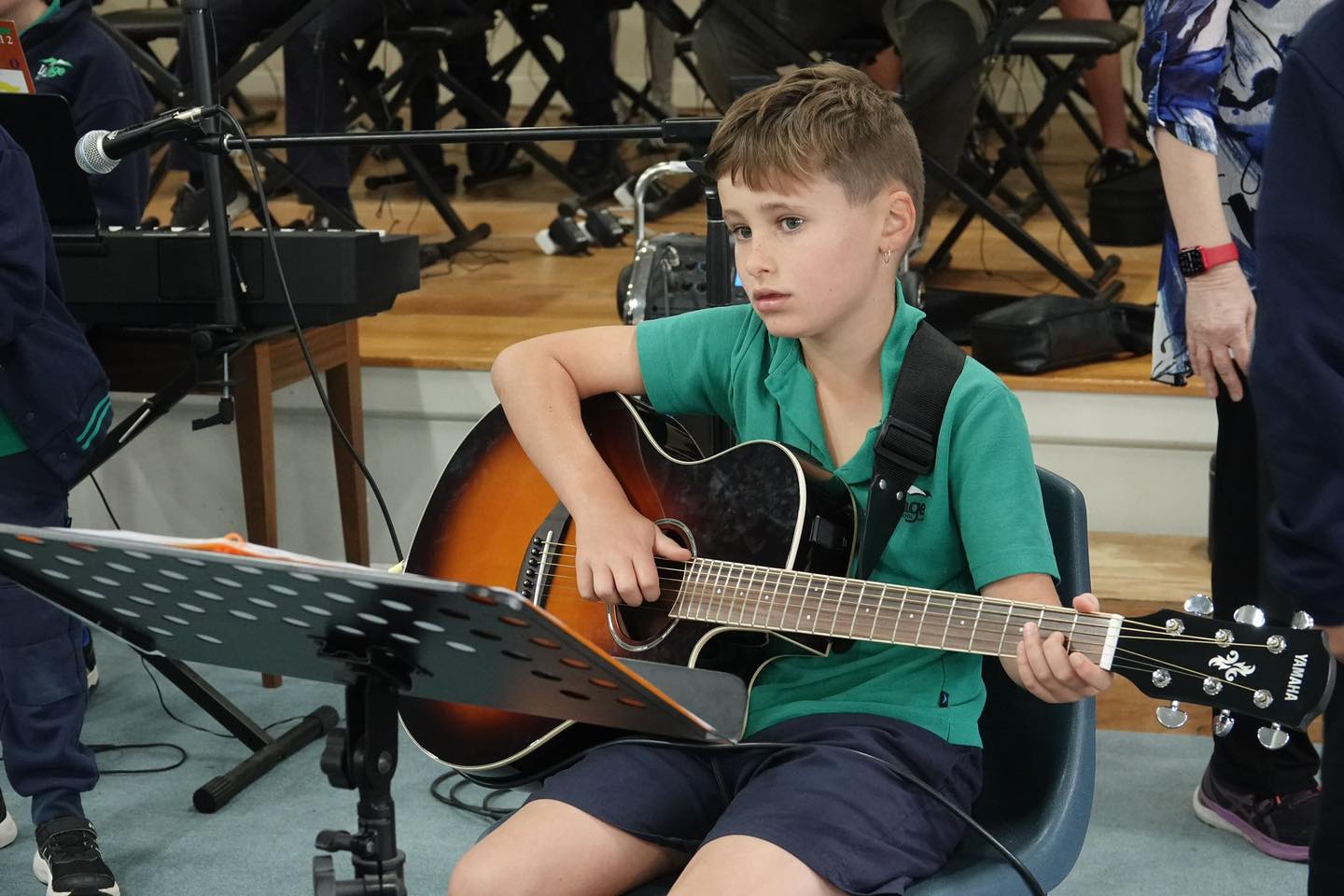
Foundation Students
Foundation students immerse themselves in a range of musical activities. They track, tap, play instruments, and move to the beat, using hand-signs and voices to identify high and low pitches, matching pitch in both known and unknown melodies. They develop aural skills by exploring and imitating sounds, pitches, and rhythms. Performance with tempo and dynamics, improvisation, active listening, and participation in musical stories, singing games, traditional songs, dances, and world music are key components of their learning experience.
Years 1 and 2
Students in Years 1 and 2 extend their understanding of musical elements through speech rhymes, singing, movement, dance, and percussion instruments. They deepen their knowledge of beat and rhythm through composing, singing, and performing, while using hand-signs and voices to identify and match pitches. Performance with tempo and dynamics, improvisation, active listening, and participation in musical stories, singing games, traditional songs, dances, and world music enrich their musical journey.
Years 3 and 4
Year 3 and 4 students focus on extending their musical understanding by developing aural and music reading skills. They use hand signs and solfa to identify and match pitches and consolidate their ability to differentiate between beat and rhythm. Their musical activities include performance with tempo and dynamics, improvisation, active listening, and participation in singing games, traditional songs, dances, percussion instruments, and world music. The students also concentrate on playing the recorder and keyboard, expanding their note range and reading skills through a graded sequence of pieces and exercises.
Years 5 and 6
Students in Years 5 and 6 engage in singing, body percussion, folk dance, movement, and keyboard learning. They study music notation, rhythms, melodies, and chords. They undertake the “Creative Expressions: Talent Show Extravaganza!” project, which encourages exploration and showcasing of talents in various creative domains. This project helps students develop artistic skills and gain confidence in performing.
Whole School Concert
All students are involved in the whole school concert, which is an exciting event and a highlight of the musical year. The concert features songs with actions, Auslan signs, choreographed dance steps, recorder parts, and keyboard parts.
Le Page Choir
Open to Year 2-6 students, the Le Page Choir meets weekly for 45-minute rehearsals. They sing a variety of songs with actions, dance moves, and Auslan signs. Performances take place at assemblies, special school occasions, and an aged care facility. The choir welcomes everyone with enthusiasm, a great attitude, and a love of music – no auditions required.
Le Page Band
The Le Page Band, for Year 3-6 students with at least one year of instrument training, meets weekly during an afternoon recess. They perform at assemblies, special school occasions, and an aged care facility. The band and choir also participate in a collaboration with Cheltenham Secondary College, where students visit regularly to hear their various bands and ensembles and to work with their students to learn new instruments.
Instrumental Program
Le Page Primary School offers a fantastic instrumental program with weekly private or group lessons during the school day. Students can learn a variety of instruments, including keyboard, guitar, ukulele, voice, percussion, and more.
We are proud of the vibrant and diverse musical experiences provided at Le Page Primary School, fostering a love for music and the performing arts in our students.
Physical Education & Health
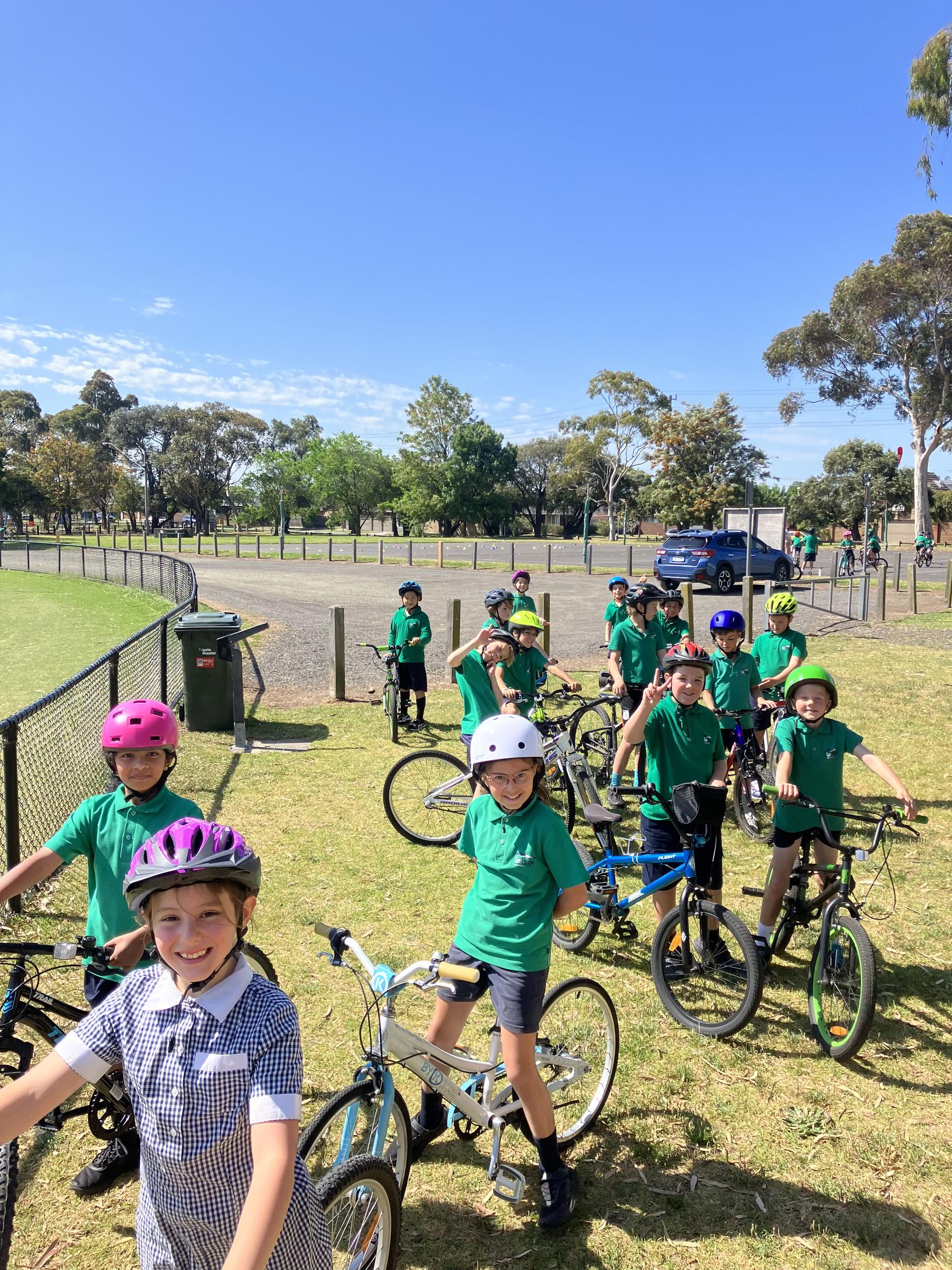
Physical Education
At Le Page Primary School, we have a strong focus on developing student confidence and competence. We do this through a wide variety of games and sports, with the intention of fostering a love for movement and activity, which in turn leads to positive health outcomes.
Students are encouraged and supported to develop their skills and knowledge in four key areas of games including: Target games, Invasion games, Net and Wall games, and Striking and Fielding.
Other areas included throughout the PE program include: Dance & Movement, Bike Education Program, Swimming, Cross Country and Athletics.
What are the objectives of the primary PE curriculum?
- Social and personal development
- Physical and motor development
- Knowledge and understanding
- Creative and aesthetic development
- Development of health-related fitness
- Development of safety
Health
Health Education focuses on topics and language designed to make sure students are healthy and safe at your school, and in the community.
The primary focus of our health program is to provide education in the Resilience, Rights and Respectful Relationships.
Respectful Relationships
Respectful Relationships education is a core component of the Victorian Curriculum from foundation to year 12. It is all about embedding a culture of respect and equality across the entire school community.
Topics include: Emotional Literacy, Personal Strengths, Positive Coping, Problem Solving, Stress Management, Help Seeking, Gender & Identity, Positive Gender Relations
For more information you can visit the Department of Educations Victorian Curriculum Outline.
Other programs within the health program include: Drug education, Sexuality education, Traffic safety (Bike Education), Health promotion, Hand hygiene, Swimming and water safety.
Cultural Studies & Auslan
Cultural Studies
In Culture Studies lessons, students begin to understand what culture means around the world. Through a fun, interactive, engaging and very hands on program students really love learning about many different cultural practices around the world.
They are introduced to comparing and looking at the similarities and differences between their own culture and other cultures around the world. They come to understand that cultures are passed on through generations of families and communities through experiences and stories, that represent their values, beliefs and what is considered normal within their culture. Students begin to understand that different cultural groups can have different practices, such as the food they eat and how it is made, the language they speak, the clothes they wear, the music and arts they create and the religious traditions they observe.
By understanding different cultures around the world students develop an awareness and realise the importance of the need to be respectful of other people and their cultures and identify that we are all different, but we can all work together to be successful.
At Le Page when exploring a culture, student learning may include-
- Location on the world map and shape of country
- The flag and what the colours or symbols represent for that county
- How people live, where and how
- Language greetings
- Different foods that people eat
- Celebrations throughout the different cultures
- What people wear within different cultures
- Stories told that are passed down through generations
- Art, games, sports, music and entertainment
Auslan
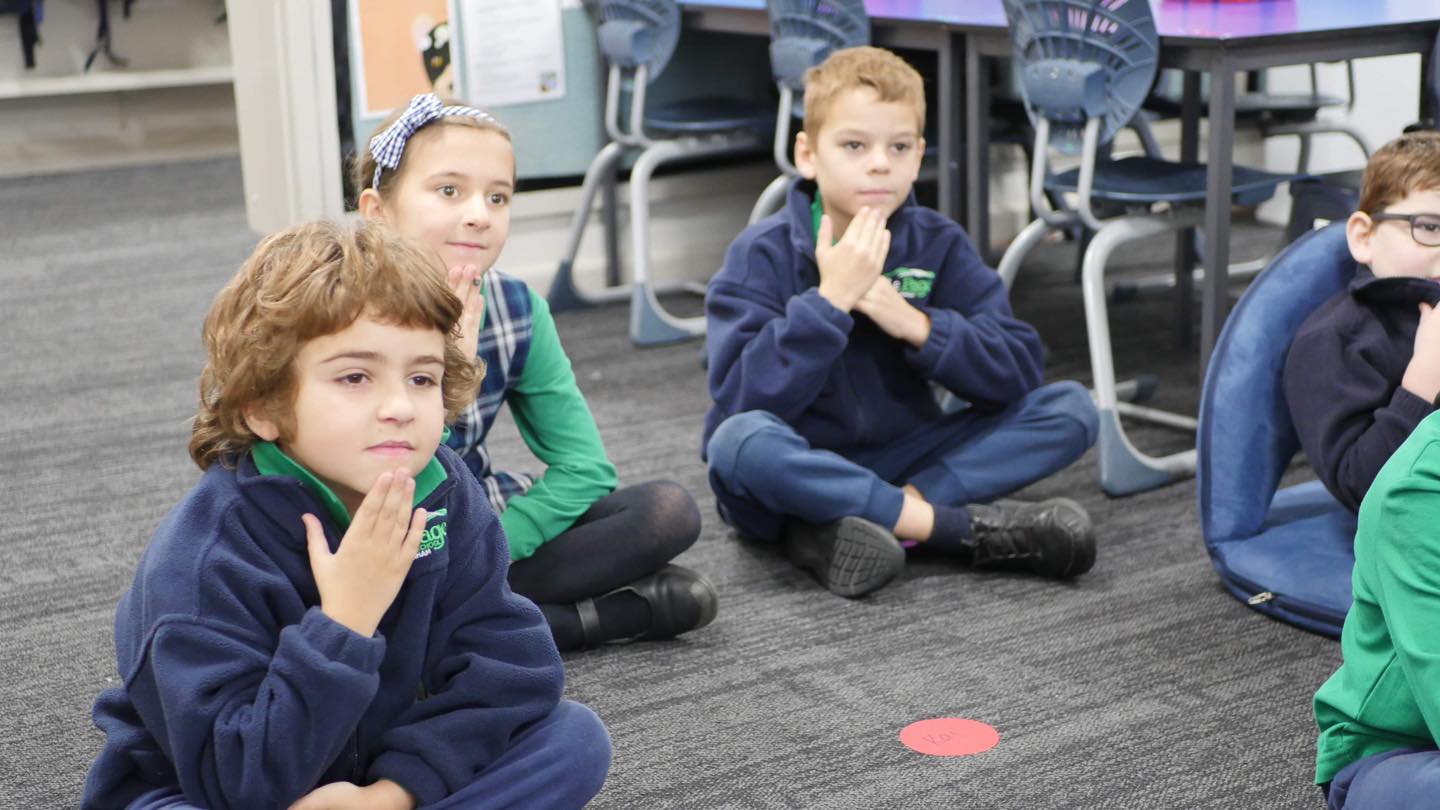
Throughout each year students continue to build their conversation skills through signing to each other and the teacher, sign songs and poems, practice fingerspelling the alphabet and play games, tell stories, and act out scenarios using Auslan.
Our Auslan program is run by Auslan Education Services. The program is delivered in video form and signed by a variety of Deaf and Hard of Hearing people. Each lesson is planned by a VIT registered teacher, 45 minutes long and is linked to the Victorian Curriculum.
The students take part in one lesson a week, facilitated by the classroom teacher. Each lesson also has a Sign Reference sheet with the Signs from each lesson, drawn by Deaf Illustrators, that the students can take home and teach their families or practise with.
This comprehensive and accessible Auslan Teaching Program is a step towards bridging the communication gap between Hearing and Deaf Australians and is specifically tailored for kindergartens, and school- setting age groups, Prep to Grade 6.
For more information please visit: https://auslaneducationservices.com/
Capabilities (Resilience Development)
Capabilities
Capabilities lessons are planned in teams to meet the outcomes outlined in the Victorian Curriculum. We align these outcomes with The Resilience Project and The Leader In Me programs we run at our school. Each lesson is 50 minutes in duration and students will complete one session per week. Each term we rotate through the following Capabilities domains:
- Ethical Understanding
- Social and Personal Understanding
- Critical and Creative Thinking
- Intercultural Understanding
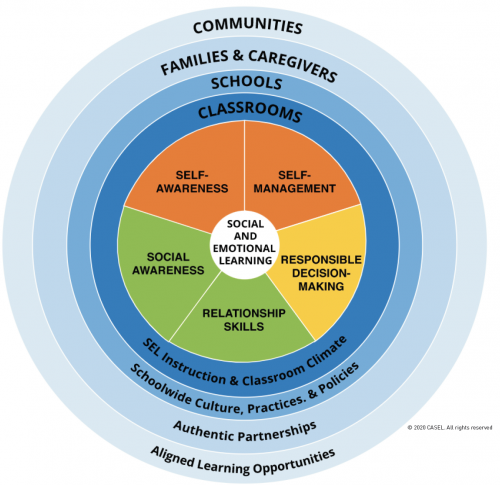
Capabilities Curriculum Overview for Terms 1-4:
Weeks 1-2
7 Habits
Aligned to Ethical Understanding
Weeks 3-6
Resilience Project
Aligned to Personal and Social Capabilities
Weeks 7-8
Cultures of the World
Aligned to Intercultural Understanding
Weeks 9-10
Problem Solving/STEM
Aligned to Critical and Creative Thinking
Social and Emotional Learning
Schools can play a pivotal role in providing students with the opportunity to gain greater social and emotional awareness and to practice interpersonal skills as they learn and grow. Social and Emotional Learning (SEL) can help students develop the understanding, strategies and skills that support a positive sense of self, promote respectful relationships and build student capacity to recognize and manage their own emotions and make responsible decisions.
Further, according to the Collaborative for Academic, Social and Emotional Learning (CASEL) quality teaching of SEL promotes student satisfaction, success and academic engagement, outcomes and achievement.
For more information, see:
Collaborative for Academic, Social and Emotional Learning (CASEL)
SEL can teach children and young people the competencies and skills they need to effectively manage their emotions, behaviour and relationships with others. The Australian Research Alliance for Children and Youth notes that schools who ensure that SEL is part of their teaching and learning can give students the opportunity to build the resilience to deal with change and unpredictability, an essential skill for positive mental health.
For more information, see:
Australian Research Alliance for Children and Youth
SEL can be taught explicitly in the classroom. To support schools in teaching these skills, a suite of teaching and learning activities developed as part of Building Resilience – A Model to Support Children and Young People are now available. CASEL identifies five broad headings under which SEL falls
- Self-awareness
identifying and recognizing emotions; recognizing personal interests and strengths; maintaining a well-grounded sense of self-confidence. - Self-management
regulating emotions to handle stress, control impulses, and motivating oneself to persevere in overcoming obstacles, setting and monitoring progress toward the achievement of personal and academic goals; expressing emotions appropriately. - Social awareness
being able to take the perspective of and empathize with others, recognizing and appreciating individual and group similarities and differences. - Relationship skills
establishing and maintaining healthy and rewarding relationships based on cooperation and resistance to inappropriate social pressure, preventing, managing, and constructively resolving interpersonal conflict; seeking help when needed. - Responsible decision-making
making decisions based on a consideration of all relevant factors, including applicable ethical standards, safety concerns, and social norms; the likely consequences of taking alternative courses of action; evaluation and reflection.
Indigenous Perspectives 2023
By December 2023, we aim to include Indigenous perspectives into classrooms and school environment by the following:
- Addition of the Torres Strait Islander Flag
- Completion of a $200,000 inclusive garden of indigenous themes e.g. Bunjil sculpture, giant circular nest, native plants, totem poles
- An Indigenous themed painting on the back wall near the garden.
Acknowledgement of Country
- Large stickers displayed throughout the school.
- In addition to the standard Acknowledgment of Country at assemblies, a weekly personal acknowledgement is also shared
- Acknowledgement of Country at the start of each day in all classrooms – each grade creates their own personal acknowledgement
Social Media
- Post mindful and positive references to Indigenous Australia and its peoples on the school’s Facebook, website and newsletter
- Continue to feature Indigenous artworks in the newsletter under the Acknowledgement of Country statement
Language Maps
- Aboriginal Country/Australian Indigenous languages maps in classrooms displayed and referred to e.g. during circle time students share where they travelled and point out the traditional owners of such places… Teachers and Brooke. Brooke to check in with Officeworks for lamination of language maps.
- Continue to purchase Indigenous themed picture-story books and display, share and enjoy
Garden
- Create a Bush Tucker garden in Inclusive garden project
Indigenous Art
- Update Indigenous art projects and displays e.g. student handprints (united/together themes) and student story-telling using Indigenous symbols Shelley has created Naidoc week (July 2 – July 9) and sorry day (May 26) activities and artwork.
Sorry Day May 26th
- Activities and assembly – students share and reflect on pre-colonisation, the impact of contact, and the need for ongoing reconciliation (May 27 – June 3) in post-colonisation. Invite elders, aunties/uncles as guest speakers (link sent to staff – thanks Courtney) YABBA
NAIDOC Week
- Activities to include Indigenous games in P.E.
Professional Learning Teams
- Review Aboriginal Perspectives in the Vic. Curriculum, and plan and facilitate learning experiences with an emphasis on acknowledgement, empathy, understanding (making connections) and respect.
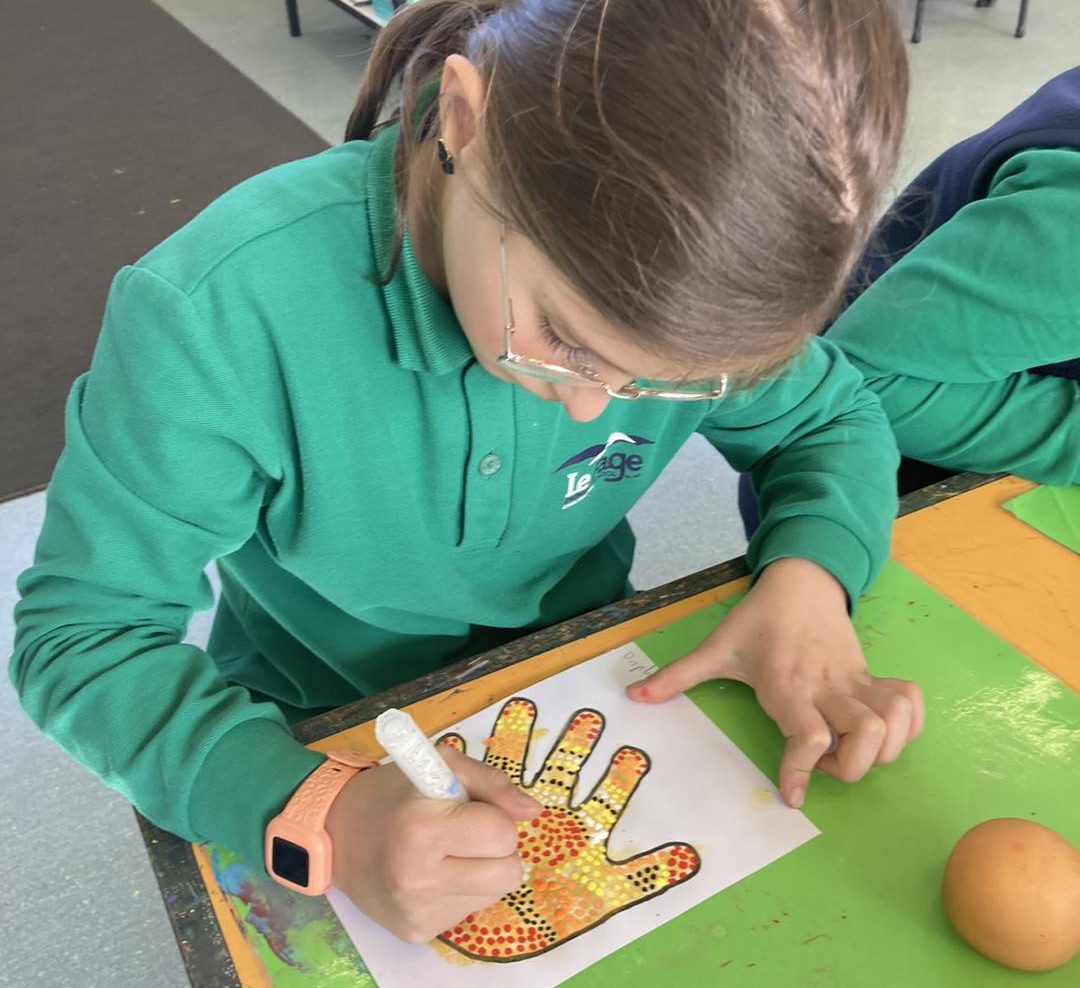
Foundation
Students about Reconciliation and Sorry Day and what it means to Australia and its history. Also have a NAIDOC Week Inquiry focus. Foundation has a range of Dreamings stories that will be read to the students throughout the year. Sorry Day and Reconciliation Day & NAIDOC week are highlights of the year and taught at an age appropriate level.
Year 1 and 2
A large number of indigenous texts are used throughout the year to support reading comprehension and language development and are used as opportunities to view others texts and views through an indigenous lens. Years 1/2 students also learn about the significance of Reconciliation and Sorry Day throughout the annual events.
Year 3-6
Year 3 to 6 students embrace an inclusive approach to their inquiry and literacy studies each term by incorporating the history, culture, and contributions of Aboriginal and Torres Strait Islander peoples. Through engaging activities and resources, students gain a deeper understanding and appreciation for the world’s oldest living cultures. They explore Indigenous artworks, traditional stories, meaning of totems, and the range of Indigenous language groups in Australia while fostering a sense of connection to the land and its heritage. We make sure to include Indigenous texts in our literacy lessons to explore the history of Indigenous peoples. Throughout the year students are also introduced to important events like National Reconciliation Week, NAIDOC Week, and Sorry Day, where they learn about significant aspects of Aboriginal culture and history.
Year 3-6 Excursion – Coalition for Environmentally Responsible Economies.
The students will identify and connect with elements of Aboriginal cultures. Understand that each Aboriginal person has connection and identifies with their culture in their own way and holds responsibility for caring for the land through a totemic system. Explore ways of keeping ancient knowledge and tradition alive through a selection of activities including Tiddalik Stories, Ochre painting, Ngarra /Traditional Dance, Merri Merri Cultural Walk, and participating in Marngrook game. Discuss the role of students to embed the knowledge they have gained into their school activities
Cultural Studies F-6
Intercultural capability enables students to learn to value their own cultures, languages and beliefs, and those of others. Students learn about diverse cultures in ways that recognise commonalities and differences, create connections with others and cultivate mutual respect.
